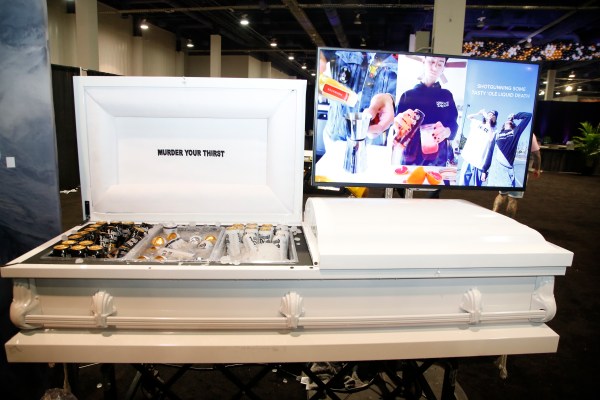Silly season is out in venture capital land.
Today investors and founders alike will bore your ears off with notes about incremental cash flow positivity and their timeline to adjusted EBITDA profitability.
Lame.
Despite the general boringness of today’s venture capital landscape, replete with conservative valuations, falling deal sizes and clucking investors sitting atop a mountain of capital, we learned today that at least some folks are having fun.
Enter Liquid Death, a direct-to-consumer water company that just raised a $70 million round at a $700 million valuation, per Bloomberg reporting. The transaction makes Liquid Death 70% of a unicorn, which is damn impressive given the state of most DTC companies — see here — that we can track on the public market exchanges.
Why the huge price tag? Because water is a growth business, baby! Bloomberg’s Katie Roof — a former TechCruncher — writes that the company is “on track for $130 million in revenue this year,” up from $45 million worth of top line last year. That’s the sort of growth that investors covet.
Liquid Death has a few things going for it that make the deal somewhat reasonable from my perspective. Sure, it’s easy to dunk on a $700 million water startup when cheaper alternatives abound; other fizzy water brands, making your own bubbly or drinking straight tap water like a peasant are all options.
But Liquid Death is more than simply bougie water. It comes with built-in liquidity, ensuring that its investors won’t be parched on the deal. Liquid Death’s fizzy water even comes with bubbles, something that every investor loves to invest in. And the water company has nearly infinite TAM, as all humans must consume the precious liquid or die pretty quickly.
Talk about a venture-backable opportunity. The margins are probably pretty good to boot. How can we guess that? Because a 12-pack of sparkling Liquid Death “tallboys” on Amazon will set you back $16. That’s more than a dollar a can. For water.
Beer can be cheaper, and it actually has ingredients and sports leagues to sponsor. Liquid Death has fewer ingredients and is not bone-grafted to the NFL. That means lower COGS and more gross profit per can by our estimation. Hell yeah.
Sure, you could argue that Liquid Death has very little moat, in that it’s a water company and water is one of the key commodities in the world (and moats). Blah, blah, blah. Open your eyes. Have you seen those cans? Liquid Death is courting the huge frat bro who’s also into death metal cohort — you know, the tank top crew who also want to ensure that their abs are visible. And what genre of music is less beloved and less commercially successful than death-themed heavy metal?
Just check the Billboard 100 for evidence of this fact.
With $130 million in anticipated 2022 revenue, Liquid Death is worth 5.4x its top line today. That’s a bargain. All it needs to do is double again, and perhaps again while holding onto its position in its market as a premium version of a base commodity. And then go public. What could go wrong?
DTC startups went public in 2021, so it is possible. And as Liquid Death is busy expanding into new flavor verticals — imagine the TAM of “Berry It Alive” sparkling water! — it will surely avoid the fates of brands like Oatly, which is also focused on the “expensive liquid consumable” category but managed to rid itself of most of its worth while public. Hell, Oatly had a Super Bowl commercial; perhaps Liquid Death can gin up a QR code and follow the Coinbase example? That went well.
That’s enough from me now. I have some fizzy water to buy. Only Liquid Death is kinda hard to find where I live, which means I need to get a ride from my spouse to the one place where I know I can buy it. In the meantime, I may have to drink still water.
Ugh. The worst.
